'5+1' with designer Emilie Hobrücker from NIO
A few weeks ago we visited NIO’s design headquarter in Munich and talked to Senior Designer Emilie Hobrücker. We got to know more about Emilie’s passion for cars and which part of a car she likes to design the most, about NOMI, the world’s first in-car AI system, the concept vehicle EVE and her opinion on how the future of car interaction design will look like. Besides we learned more about Emilie’s experience being a female designer in this still male-dominated automotive industry.
1. When did your passion for cars begin? Did you always know that you want to work as a designer in the automotive industry?
Growing up in Munich, a catwalk for cars, I always enjoyed spotting beautiful cars. The passion developed really in the process of learning about designing cars. Studying industrial design gives you the basic tools to design anything that has a shape and a function. In the interior of a car you find lots of components the passengers interact with - such as the steering wheel, the climate control or the seat control. This is what I find interesting, a design challenge centered around the user needs. Naturally I tend to scan a newly released car up to its details to learn about new design solutions. Understanding a product and its functionality means seeing its value which then generates appreciation and ultimately passion.

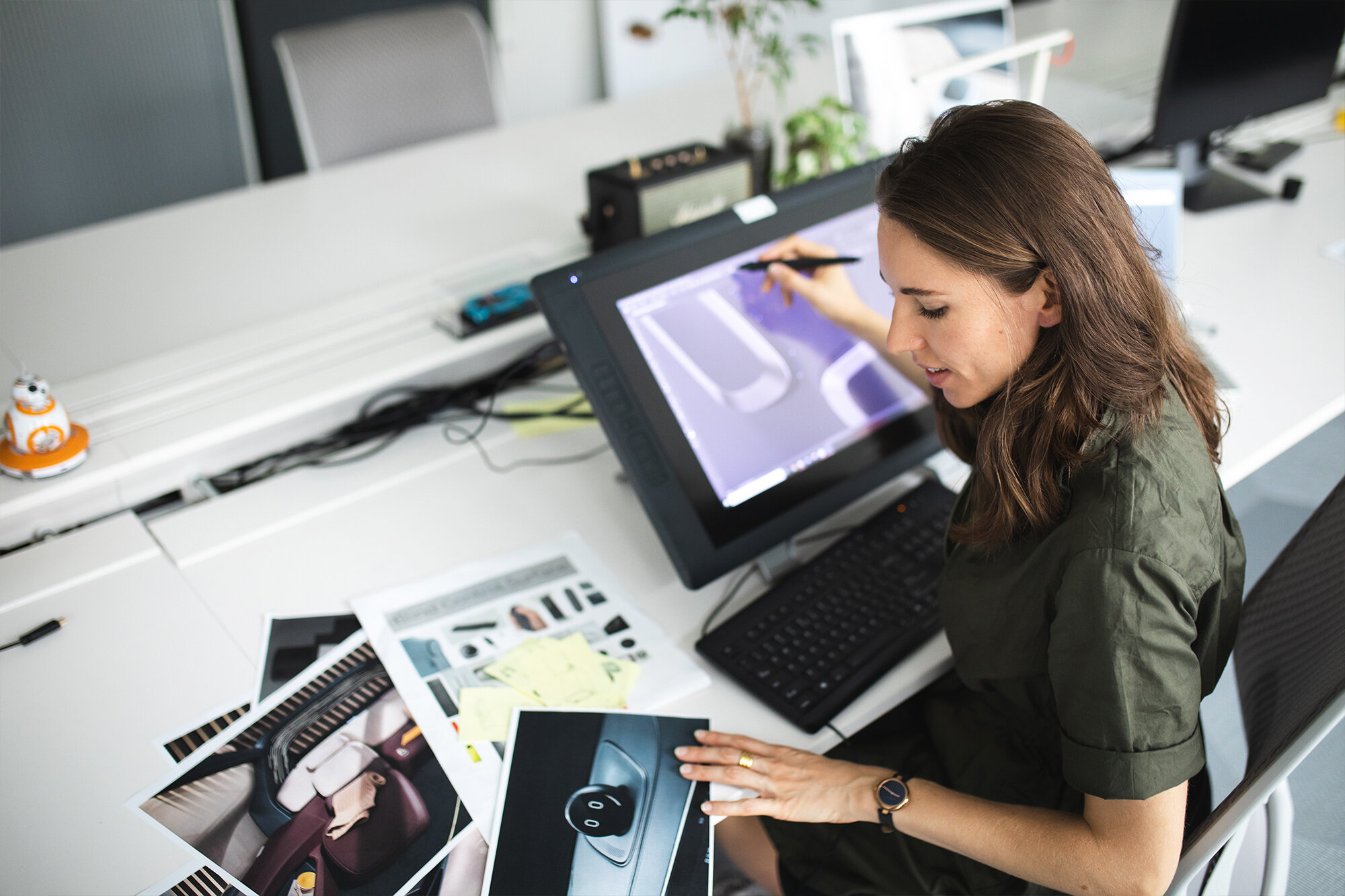
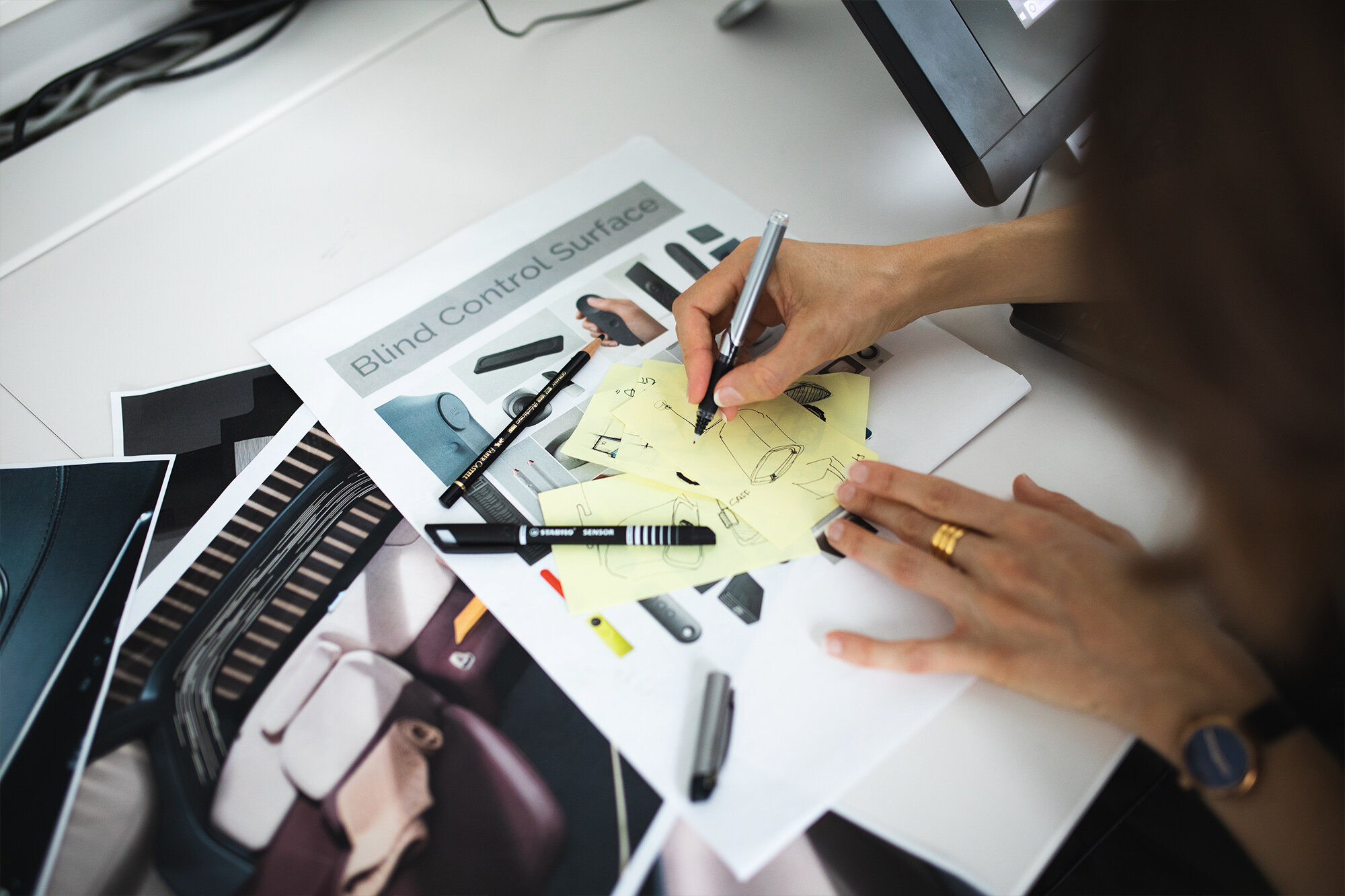
2. You are responsible for the designs in the car the user interacts with. Where do you get your inspirations from? What is your favourite part to design and why?
My inspiration I partially get from observing users and thus finding ways to improve the usability. Also, a nice shape or a new technology can spark an interesting idea.
I enjoy designing a steering wheel as it comes with restraints but also with possibilities. It is that piece of tangible user interface that translates the driver’s intention to the car’s movement. It creates an emotional connection from user to vehicle. A steering wheel needs to be ergonomic, partially blind controllable – as the driver needs to focus on the road – and iconic for the brand. That’s an interesting design task. A whole new chapter begins when we think about cars that can drive autonomously. The steering wheel potentially retracts or even folds away. I think there is still a lot to be designed regarding steering wheels until one day there potentially is no need for it anymore. I’m not sure today’s drivers would be ready for that step yet.
3. You are shaping the future of automotive. One of your projects you have been working on is NOMI, the world’s first in-car AI system. What kind of challenges did you experience while designing NOMI and what are its features?
Nomi is your personal companion on board. To end up with this iconic design of its characteristic eyes and the fun emojis lots of workshops, brain storming and prototyping had to be done. A lot has to be considered when designing a friendly little helper that assists or entertains the passengers. First it shouldn’t make you feel like it is superior to you. Then there is the phenomenon of the uncanny valley. Certainly, the in-car-AI was supposed to have some human features, i.e. a voice, a body, kinematics. Never the less trying to imitate nature too closely can result in something rather creepy. A level of abstraction and some iconic features are important and help humans to bond with the AI.
Of course, speaking the same language helps as well. Unfortunately, Nomi so far knows Chinese only. Even though I attended some Chinese classes here at NIO I still need the Google translate app as a mediator when talking to Nomi. I think a cool feature is when you ask Nomi to take a Selfie of the occupants. There also are some surprising moments when Nomi celebrates certain events. It is those unexpected actions that give character to Nomi and bring it to life.
Overall, Nomi is a great enabler for an advanced voice control system that makes a lot of interactions more intuitive and more efficient.
4. EVE is the concept vehicle of NIO showcasing the future of autonomous driving. As you are working on the UX experience, how will the car interaction design look like in the future?
EVE is showcasing an autonomous vehicle designed inside out. The main question we asked ourselves when designing for the user experience was: How would passengers want to spend their time when commuting or travelling in an autonomous car? EVE still has got a steering wheel, but manual driving becomes an experience the passenger can choose. Such as cocooning or connecting. The interior ambiance is adapting to the users’ needs and to their behavioral pattern. There is very few physical controls and buttons in the car. The main way of communication with the in-car system is through voice. The focus is less on the driver’s perspective. Therefore, Nomi is not facing the passengers and that’s meant in a literal way. The iconic eyes are replaced by a light body animated by colors and movement. Functions that are controlled quantitatively such as volume, brightness or temperature are less intuitively controlled by voice. Hence, we designed a slider interface which is integrated in the doors. One of the highlights of EVE is the glass roof that extends all the way to the floor in the front of the vehicle. If needed the part underneath of where the conventional dashboard would sit can turn into a screen. It can enhance the driving experience with augmented reality or display entertainment content.
Overall, I assume that autonomous cars will be designed more versatile and even more user centered. AD cars might be considered moving spaces that allow passengers to spend valuable time while being on the road. Voice control will definitely become bigger, even in Europe.
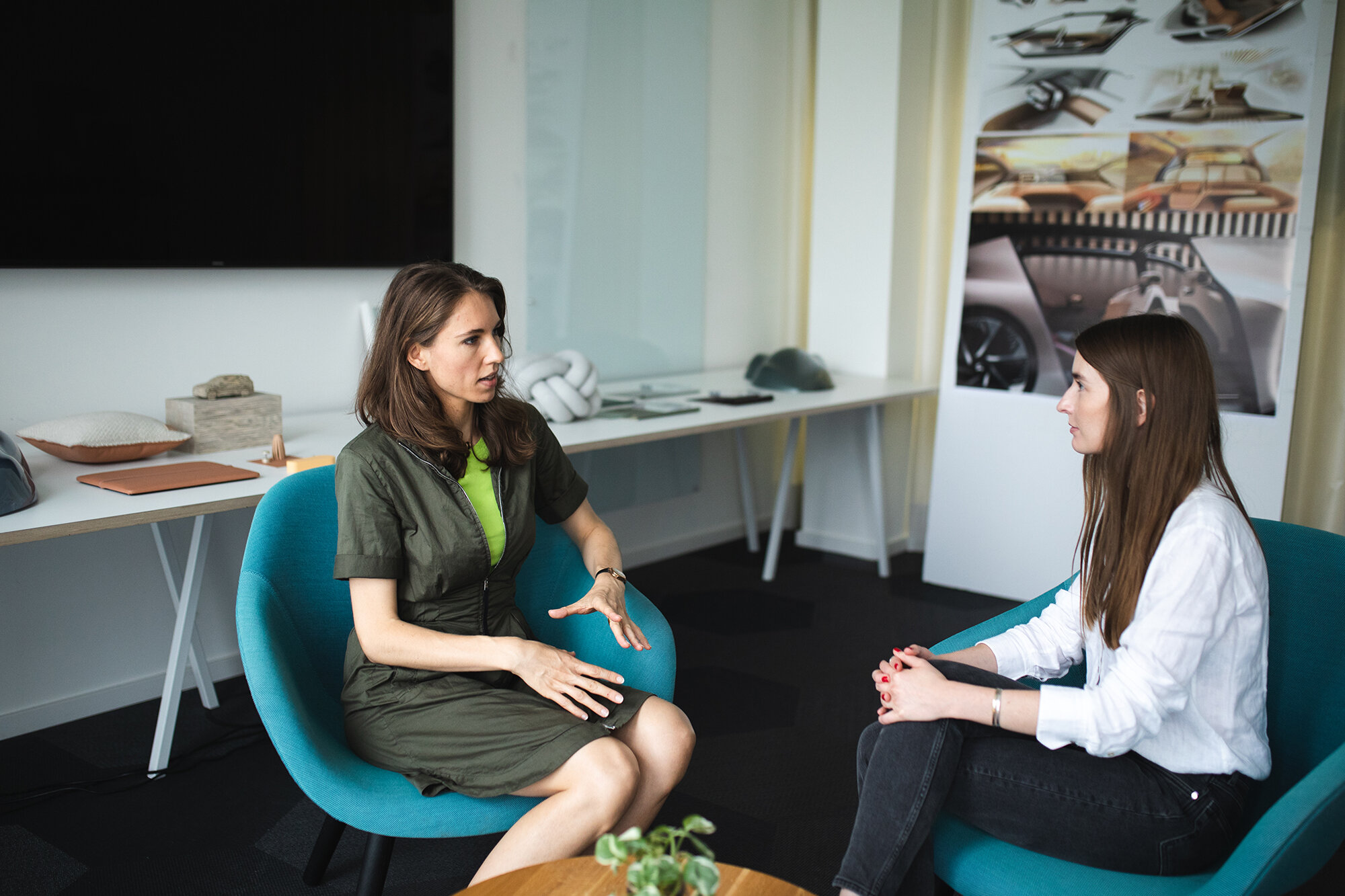
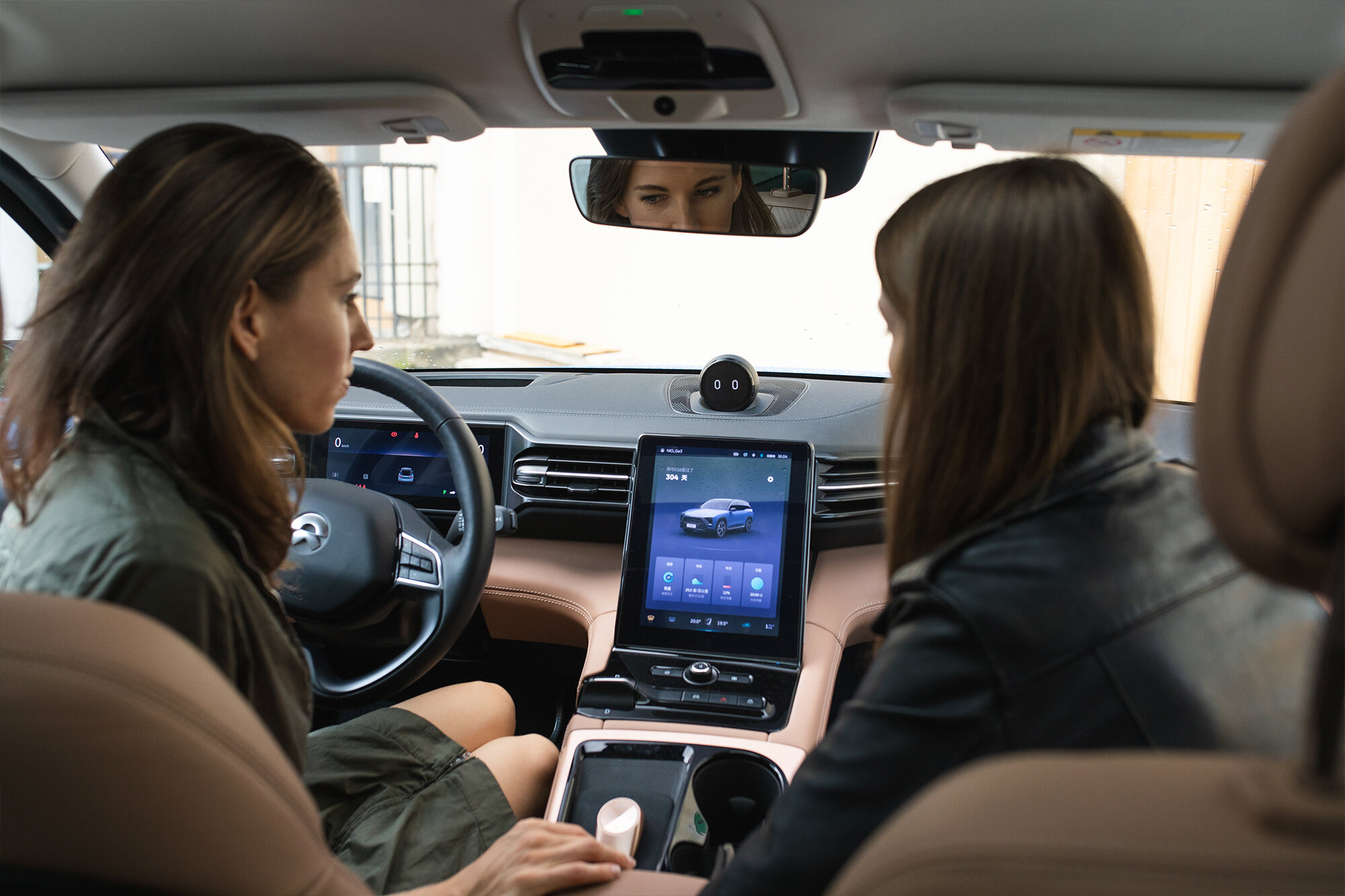
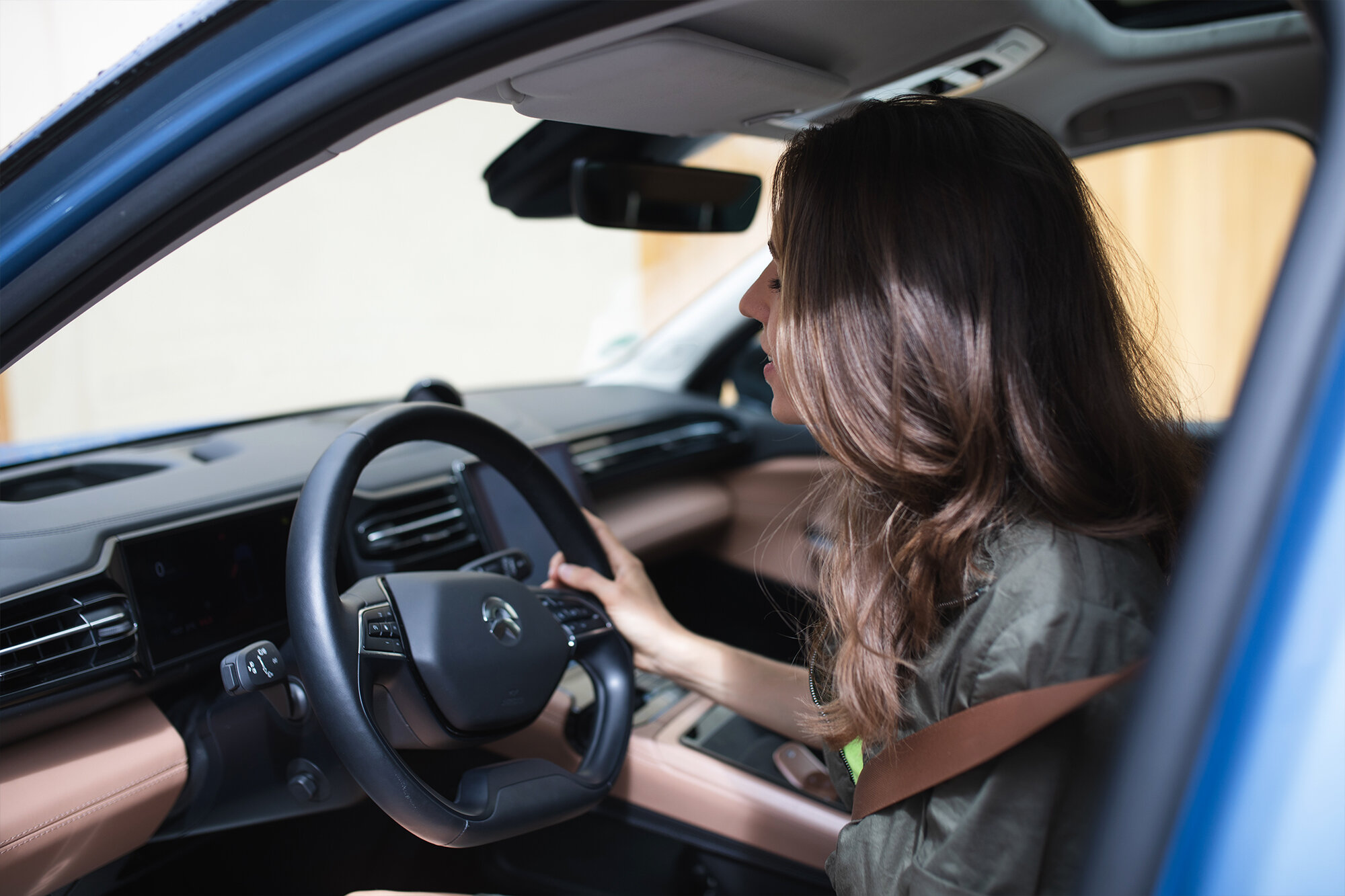
5. The automotive industry is still dominated by men. How does it look like in your team and in general at NIO? Where do you see the benefits and chances of having more women in this industry?
Currently we are actually a team of three women. And I have to say the team spirit is quite supportive and cooperative. Women probably have a softer approach to design in terms of design language and also in terms of attitude. Speaking about autonomous cars – I think transportation design can benefit from this approach especially as we are looking into a future that is less focused around the joy of driving but is rather asking the question of how we really want to spend time in our cars.
At NIO, we are driven by design, and we are a company with a holistic approach to shaping the future of mobility. I think it is important that equally male and female designers work together in order to achieve the best experience for different users.
And the +1 question from Emilie to you: “Can you imagine owning a car that doesn’t have a steering wheel anymore?”
– Nooooo (via Instagram)
– No! Then there is no passion of driving anymore. Just a transport. (via Instagram)
– Right now, not. But maybe in five years already. (via Instagram)
Thank you Emilie for the nice interview.
Pictures: Coralia Glavas
Interview: Britta Reineke


